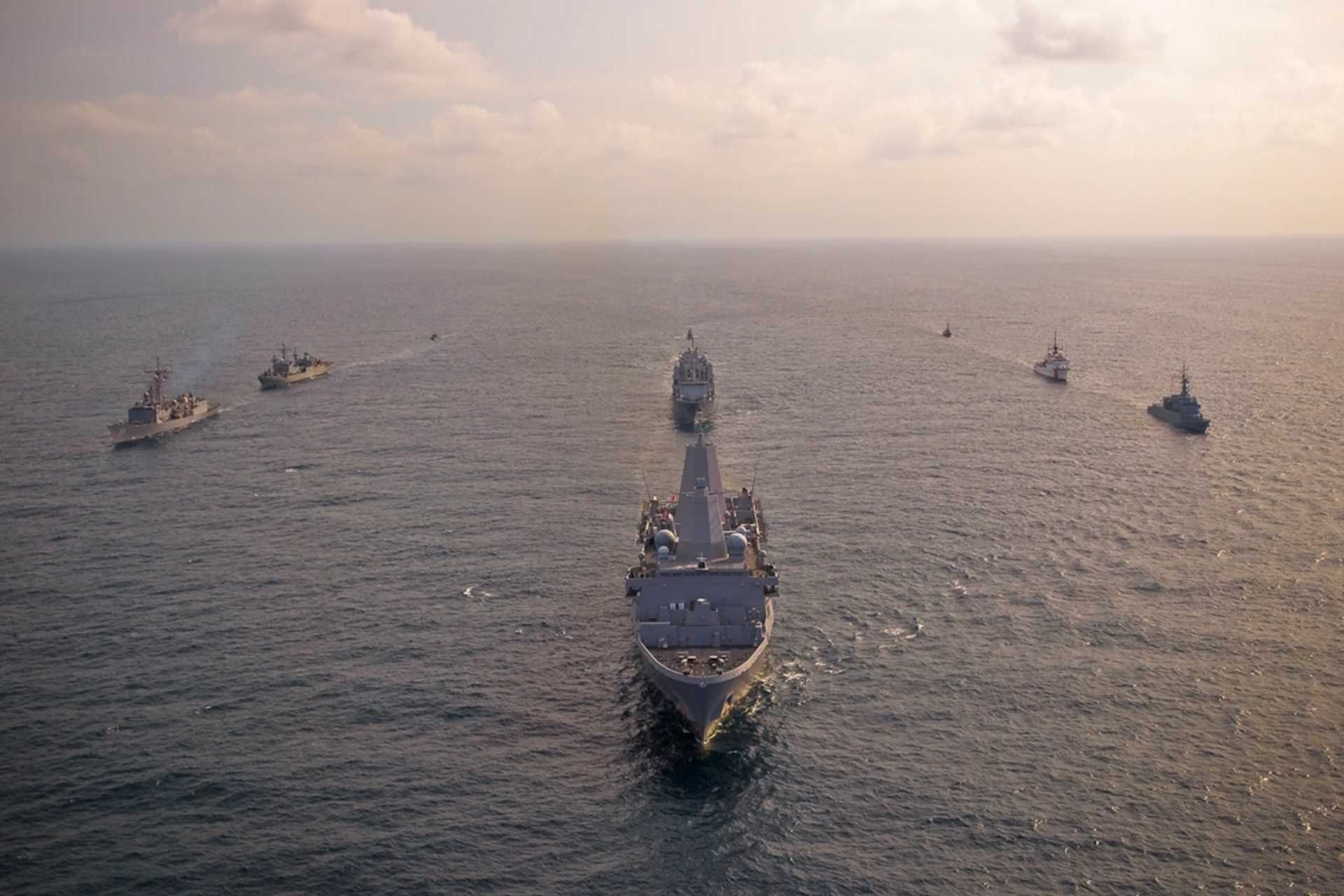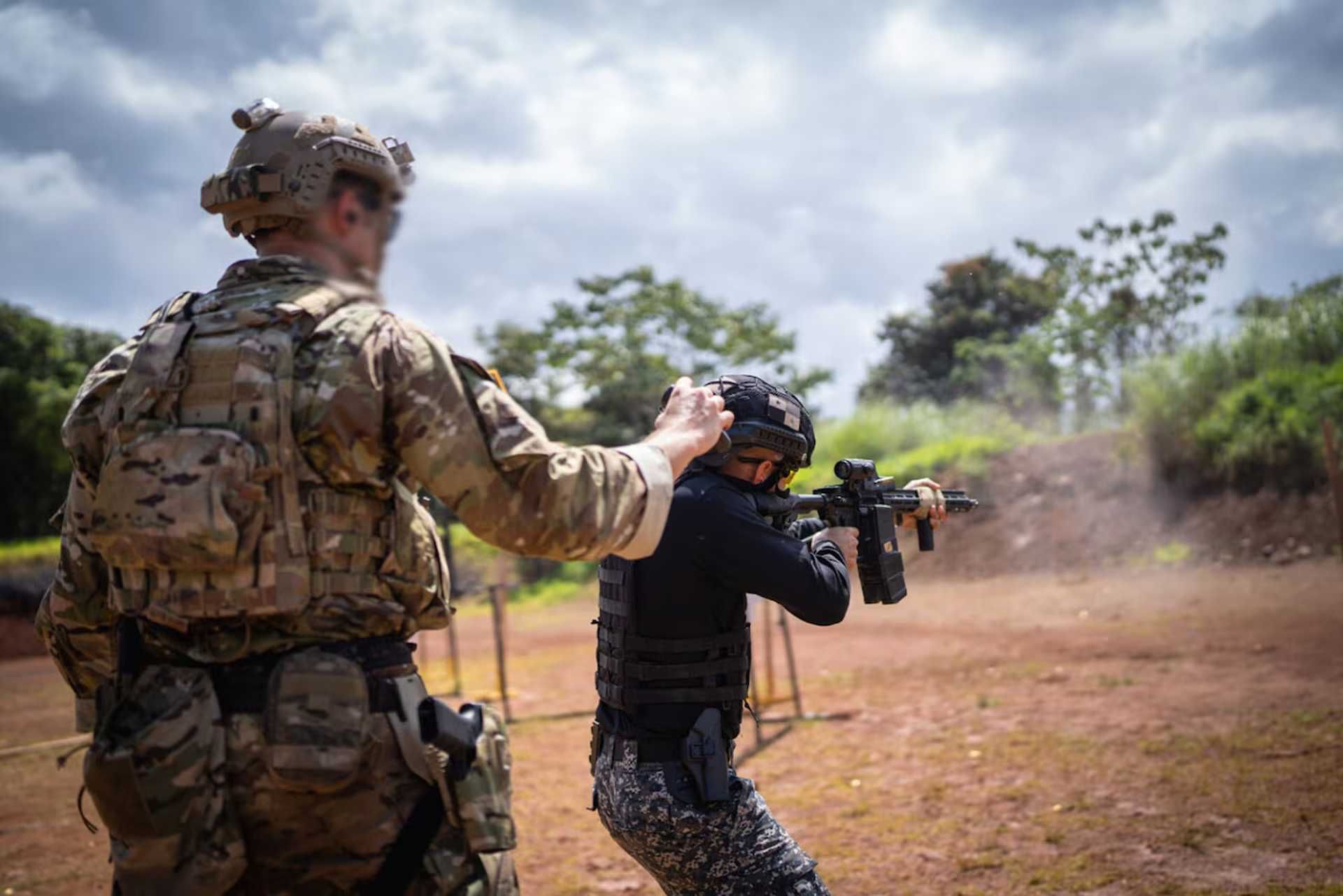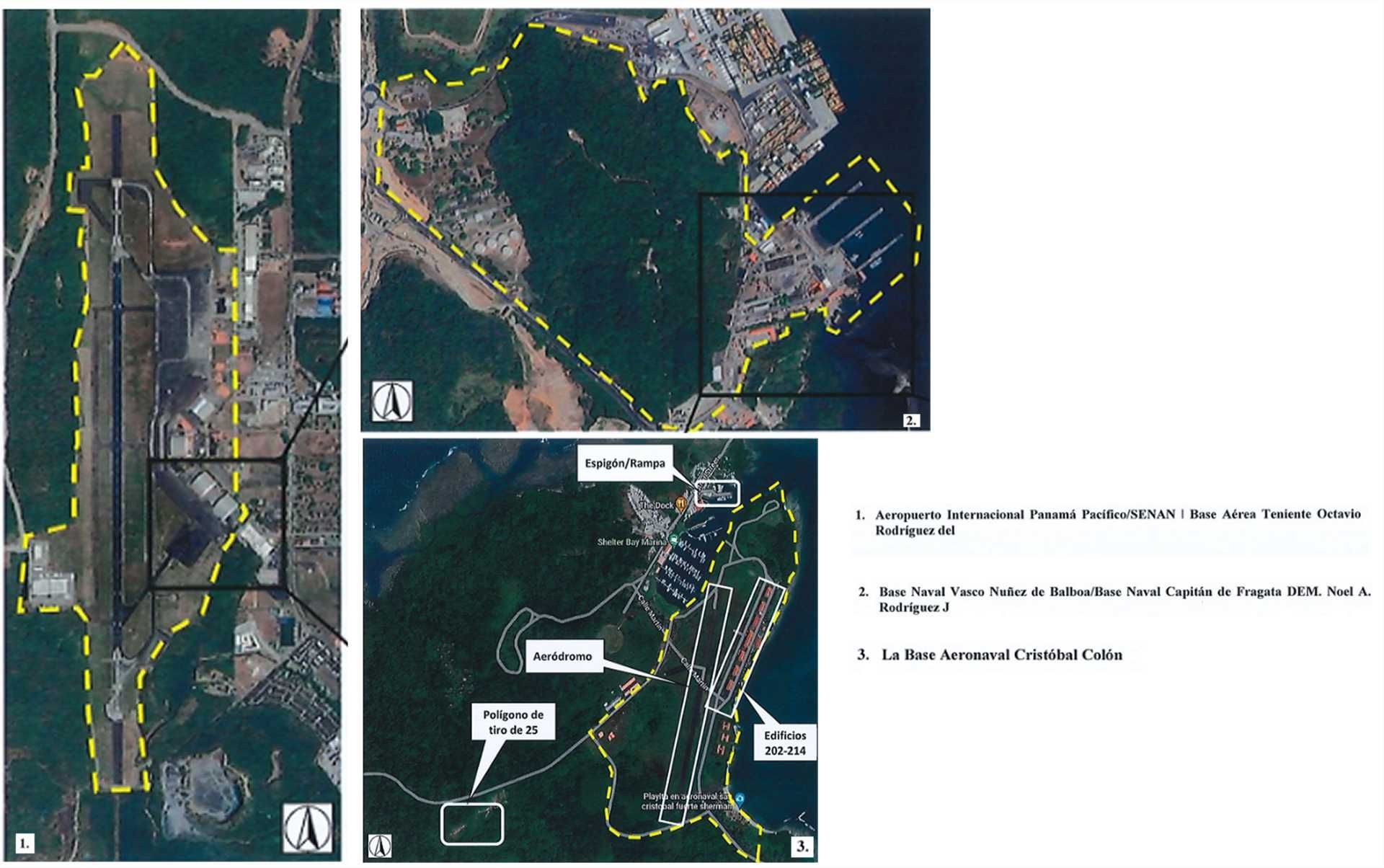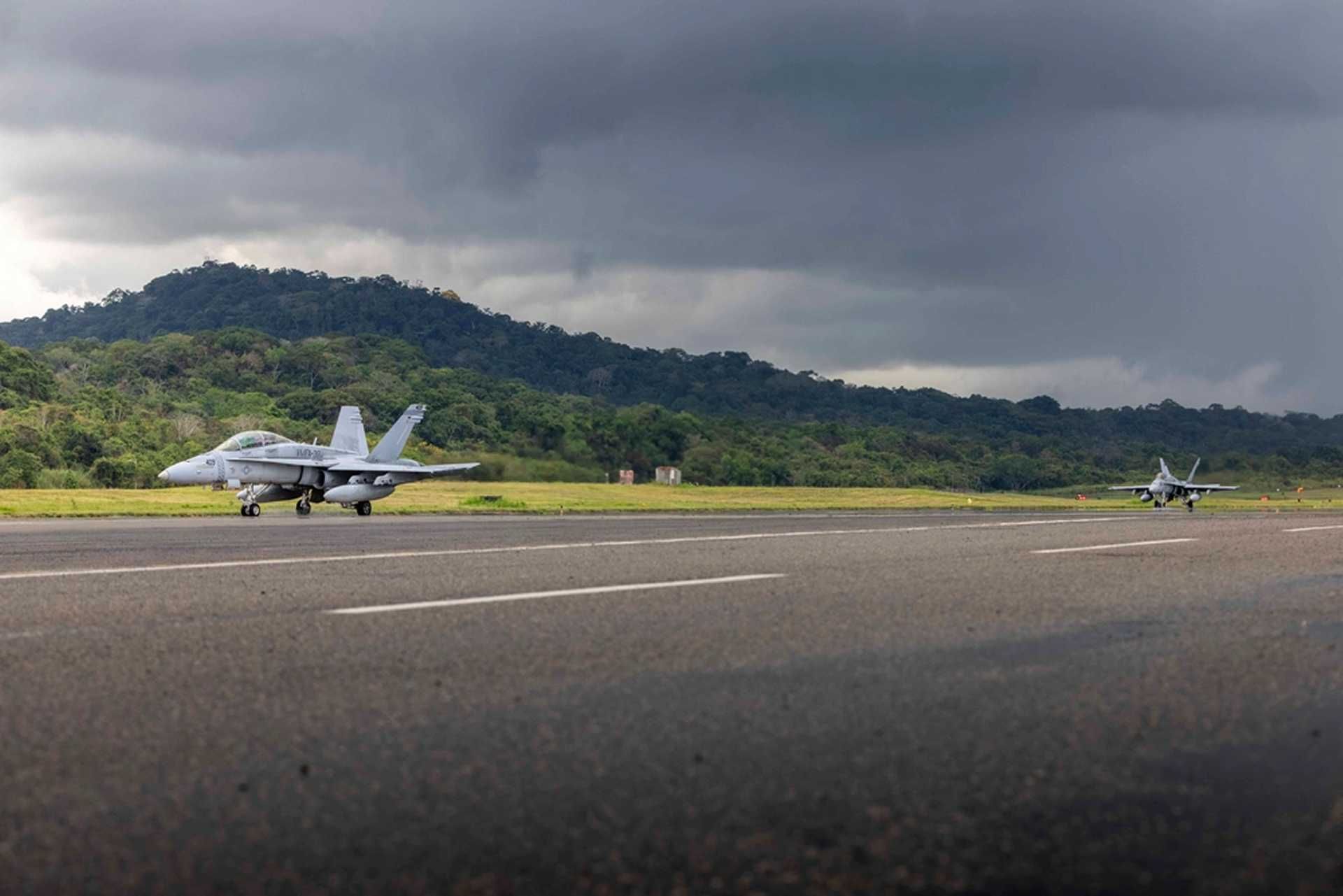Breaking News
Breaking News | Panama authorizes US armed forces to operate from three key air and naval facilities.
On April 9, 2025, a Memorandum of Understanding (MoU) was signed between the Ministry of Public Security of the Republic of Panama and the Department of Defense of the United States of America. The document establishes a framework for cooperative security activities in Panama and formalizes mutual understandings related to the presence and operations of U.S. personnel and contractors in specific Panamanian installations. The memorandum enters into effect on the date of the last signature and is valid for an initial period of three years, renewable for additional three-year terms. Either party may terminate the agreement by written notice with six months’ advance notice.
Follow Army Recognition on Google News at this link

These bases will enable aerial and maritime interdiction missions and facilitate joint training with Panamanian forces, especially under the scope of the U.S. Southern Command. (Picture source: US Navy)
On April 10, 2025, Panamanian Public Security Minister Frank Alexis Abrego reaffirmed Panama’s sovereignty over the Panama Canal, clarifying that the recently signed Memorandum of Understanding (MOU) with the United States does not involve ceding control or establishing foreign military bases. Addressing public concerns following the bilateral agreement, Abrego stressed that all terms of cooperation were fully disclosed and consistent with the Panamanian Constitution and the 1977 Treaty of Neutrality. He emphasized that the accord respects Panama's legal frameworks and does not allow the construction of permanent U.S. military installations.
The MOU, signed in Panama City by Minister Abrego and U.S. Secretary of Defense Pete Hegseth, allows the U.S. to use Panamanian-controlled facilities such as Rodman Naval Station, Howard Air Force Base, and the Cristóbal Colón Naval Air Base for training, humanitarian missions, and joint exercises. These deployments are rotational, and Panama retains full administrative authority over the sites. The agreement permits U.S. military personnel and contractors to operate in designated areas under Panamanian oversight, while both nations continue joint operations aimed at enhancing regional stability.
Panama's Ministry of Foreign Affairs reiterated that the deal aims to deepen security cooperation against hybrid threats and upholds the principle of Panamanian sovereignty. The agreement explicitly rules out permanent U.S. bases and requires Panama’s approval for any deployment. The joint statement also affirmed that transit of warships and auxiliary vessels from both nations will proceed under a “first and free” framework, grounded in the Treaty of Neutrality. The two sides pledged to develop a cost-neutral mechanism to compensate for transit services rendered to military vessels, ensuring alignment with international norms.
The agreement comes amid heightened geopolitical competition, particularly over perceived Chinese influence in the canal zone. Since returning to office in January, President Donald Trump has pledged to counter what he described as Beijing’s "malign influence" in Latin America. During a high-profile visit to Panama, Secretary Hegseth characterized the canal as “key terrain that must be secured by Panama with America, and not China.” He noted that current operations involve two U.S. Navy cruisers, a Coast Guard cutter, four F-18s, and over 1,000 U.S. military personnel, including a Marine infantry company, participating in exercises with Panamanian forces.
Hegseth and Panamanian President José Raúl Mulino jointly announced the upcoming deployment of the USNS Comfort, a naval hospital ship, to deliver medical services and further solidify bilateral ties. The MOU also calls for the revival of regular joint jungle operations and the reestablishment of the PANAMAX defense exercise in 2026. A separate agreement signed between Minister Abrego and Admiral Holsey outlines increased cooperation in professional military education and capacity-building initiatives between both countries.

The MOU also calls for the revival of regular joint jungle operations and the reestablishment of the PANAMAX defense exercise in 2026. (Picture source: US DoD)
At the regional level, Panama's decision to withdraw from China’s Belt and Road Initiative was highlighted by U.S. officials as a step toward reducing Chinese influence in critical infrastructure. Washington welcomed this move, as well as Panama’s significant reduction in illegal crossings at the Darién Gap, which U.S. officials said had fallen by 99% over the past year. Secretary Hegseth emphasized that the United States seeks to deter conflict through “peace through strength” and framed the expanded partnership as part of a broader strategy to secure the hemisphere against coercion from state and non-state actors.
While the U.S. aims to bolster its military presence through rotational deployments, Panamanian authorities insist on maintaining their constitutional boundaries. President Mulino rejected earlier drafts that would have permitted permanent U.S. bases, stating such provisions would "set the country on fire." This sentiment was echoed by critics, including trade union leader Saúl Méndez, who called the agreement a threat to national sovereignty. Nonetheless, officials from both sides insist the current arrangement preserves Panama’s autonomy.
As part of long-standing bilateral security relations, the United States has provided over $230 million in security assistance to Panama in the past five years. The two governments also signed new arrangements on cyber cooperation and strategic planning, including a Cyber Cooperation Arrangement between U.S. Southern Command and the Panama Canal Authority, and a technical support agreement with the U.S. Army Corps of Engineers to ensure the canal’s sustainability.
Still, domestic and international reactions reflect ongoing controversy. Panamanian authorities filed a diplomatic note requesting the U.S. to include omitted language in its version of the joint statement recognizing Panama’s non-negotiable sovereignty over the canal. Meanwhile, China has expressed strong opposition to the U.S.-Panama deal and has launched an antitrust review of CK Hutchison’s $19 billion sale of 43 ports — including the two on either end of the Panama Canal — to a BlackRock-led American consortium. Panamanian officials have accused CK Hutchison of failing to renew its contract and owing $300 million, fueling further tensions.
When analyzed more closely, the April 2025 Memorandum of Understanding (MoU) refers to the Treaty Concerning the Permanent Neutrality and Operation of the Panama Canal, which entered into force on October 1, 1979, and acknowledges the shared obligation of Panama and the United States to uphold the neutrality regime established in that treaty. The agreement’s stated objective is to strengthen, promote, and develop bilateral cooperation in security matters through reciprocity and mutual benefit, with respect for the independence, sovereignty, and territorial integrity of both parties. It reaffirms the security relationship between the participants and recognizes the role played by Panama’s Ministry of Public Security in regional security, particularly in combating transnational criminal organizations and illicit trafficking.

As part of long-standing bilateral security relations, the United States has provided over $230 million in security assistance to Panama in the past five years. (Picture source: US DoD)
The memorandum explicitly recognizes the arrangement allowing the temporary presence of U.S. personnel in Panama, which was agreed upon through an exchange of notes between September 15 and 20, 2022, and entered into force on September 20, 2022. It also references the June 28, 2019, ACSA agreement (Acquisition and Cross-Servicing Agreement) between the Ministry of Public Security of Panama and the U.S. Department of Defense for reciprocal provision of logistics support, supplies, and services.
Under the new MoU, U.S. personnel and contractors, in coordination with Panama’s Ministry of Public Security and consistent with Annex B definitions, are authorized to use designated authorized locations and installations, identified in Annex A, to conduct training, humanitarian activities, exercises, visits, storage, and other agreed-upon activities. All such activities must comply with respective national laws and regulations, including international legal obligations. The memorandum is intended to provide a framework for joint use of authorized facilities and areas designated for such use.
The parties agree that under Article 310 of the Political Constitution of the Republic of Panama, and in accordance with Panamanian laws, all security installations located within Panamanian territory—including those identified in Annex A—remain Panamanian facilities. The installations and designated areas are made available for joint use, and Panama retains the authority to authorize access to and use of such locations by U.S. personnel and contractors, including the discretion to allow access when deemed necessary. The parties also recognize that the designated areas may require upgrades, including construction or refurbishment, to accommodate planned activities.
The use of facilities and areas by U.S. personnel and contractors does not imply any cost to the Panamanian government or the U.S. government, as participants are responsible for their proportional share of operating and maintenance costs. Panama’s Ministry of Public Security is the primary entity responsible for the security of these locations and retains the authority to take necessary measures to protect U.S. personnel, contractors, and property. The parties intend to cooperate closely to ensure this security.
Designated facilities and areas remain under joint use, and the parties may agree to designate restricted sections for exclusive U.S. use, provided Panama is notified in advance and retains access rights. All non-relocatable infrastructure built by the U.S. on Panamanian territory remains the property of Panama, though it may be used by U.S. personnel during the MoU’s validity. Upon completion of the MoU or the specific work, such infrastructure is to be returned to the Panamanian government in its existing condition, unless otherwise required.

Annex A lists three locations as authorized facilities and designated areas for joint use with U.S. personnel: Panamá Pacífico International Airport/Base Aérea Teniente Octavio Rodríguez, Vasco Núñez de Balboa Naval Base/Naval Base Capitán de Fragata DEM. Noel A. Rodríguez J, and Cristóbal Colón Naval Air Base. (Picture source: Panama Government)
No provision of the MoU or its annexes is intended to create any rights or obligations under international law. The document does not contravene the existing legal obligations of either party or their respective governments, including those relating to the neutrality of the Panama Canal. The participants also recognize that the 2022 agreement applies to all activities carried out under this MoU. The memorandum is executed in both English and Spanish and signed by the representatives of the Ministry of Public Security of Panama and the Department of Defense of the United States.
The three Panamanian facilities designated in the Annex A for joint use with U.S. personnel include the Panamá Pacífico International Airport/Base Aérea Teniente Octavio Rodríguez, located in the Panamá Pacífico Special Economic Area near Panama City. This facility was formerly known as Howard Air Force Base, a U.S. military installation, until its transfer to Panama in 1999. It now serves dual functions: as a civilian international airport and as the largest and primary air base of Panama's National Aeronaval Service (SENAN). The base supports both commercial aviation and national air operations, including surveillance and security missions.
The second facility is the Vasco Núñez de Balboa Naval Base/Naval Base Capitán de Fragata DEM. Noel A. Rodríguez J, situated on the Pacific side of the Panama Canal, which was previously known as Rodman Naval Station under U.S. control until its handover to Panama in 1999. Currently operated by SENAN, the base plays a crucial role in maritime security operations, including patrols and interdiction efforts against illicit trafficking. Serving as a key maritime operations center for SENAN, this naval base features facilities such as piers, maintenance areas, and administrative buildings, notably Building 53, which is referenced in Annex A.
The third and final facility named is the Cristóbal Colón Naval Air Base, on the Atlantic coast near Colón. This base, a key component of SENAN's operations in the region, includes facilities such as training fields, a firing range, an aerodrome, a pier, and multiple buildings (numbered 202–214), supporting SENAN's aerial and maritime missions in Panama's northern maritime zones. According to the Annex A, the agreement includes its training fields, firing range, aerodrome, pier, and buildings 202–214.
Annex B defines "U.S. personnel" as including the U.S. Department of Defense, its civil and military personnel, and all its property located in Panama. "U.S. contractors" are defined as persons or entities providing goods or services in Panama under contract or subcontract with the U.S. government or its personnel, excluding Panamanian nationals and residents. "U.S. property" refers to defense and security equipment, supplies, and relocatable materials imported or acquired for or by U.S. personnel, including vehicles, vessels, and aircraft.

The memorandum explicitly recognizes the arrangement allowing the temporary presence of U.S. personnel in Panama, which was agreed upon through an exchange of notes between September 15 and 20, 2022, and entered into force on September 20, 2022. (Picture source: US DoD)


























